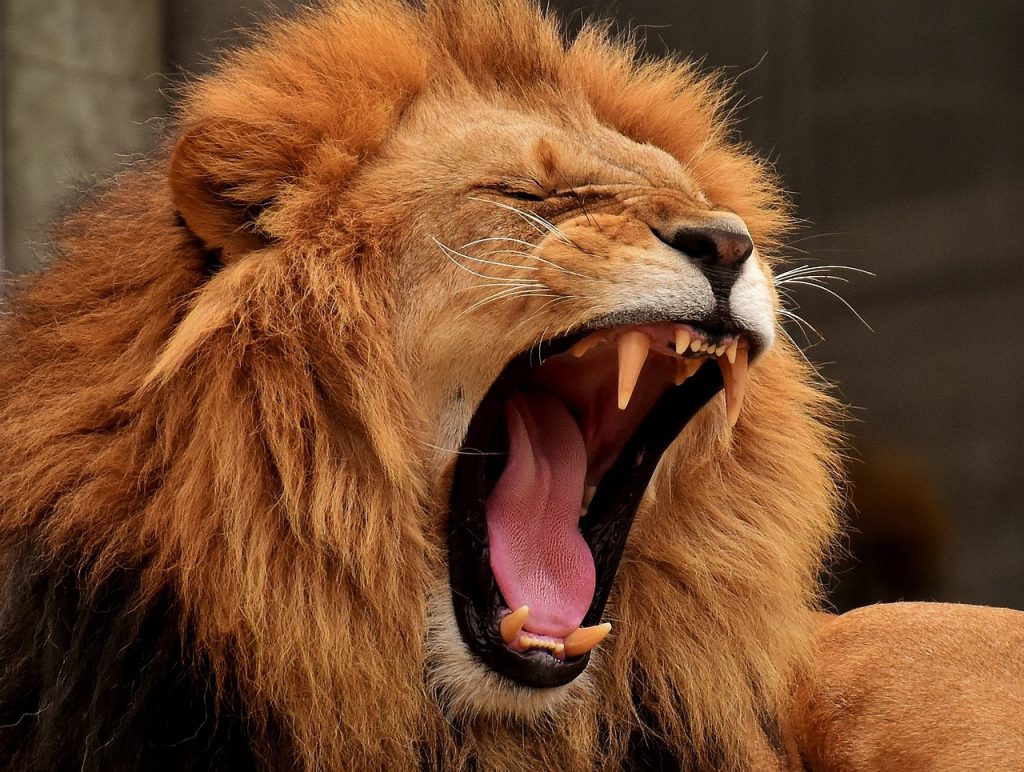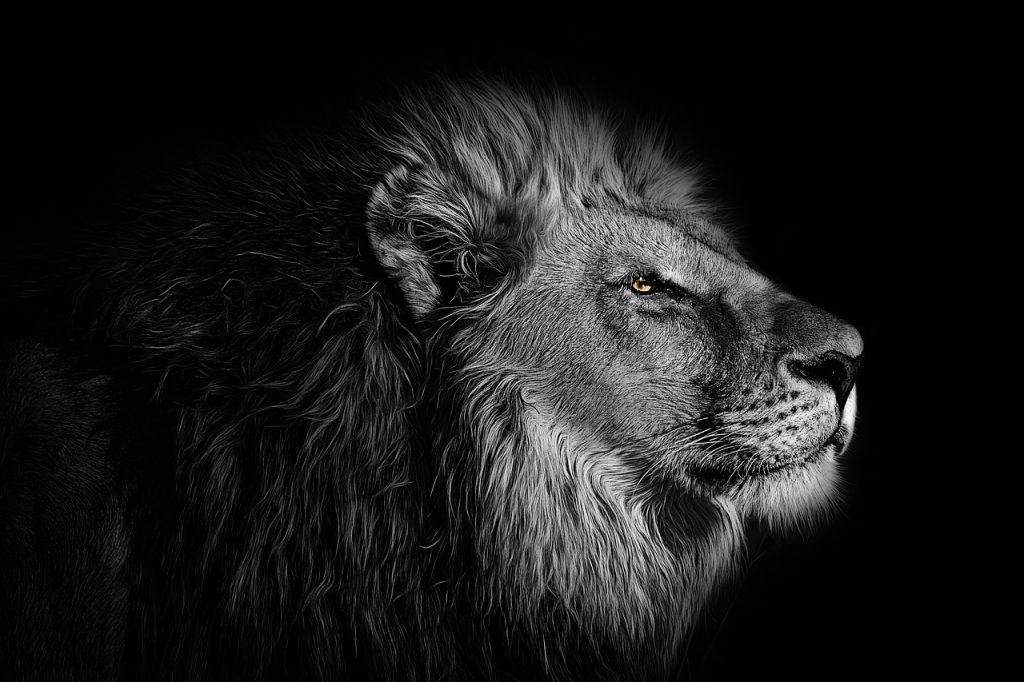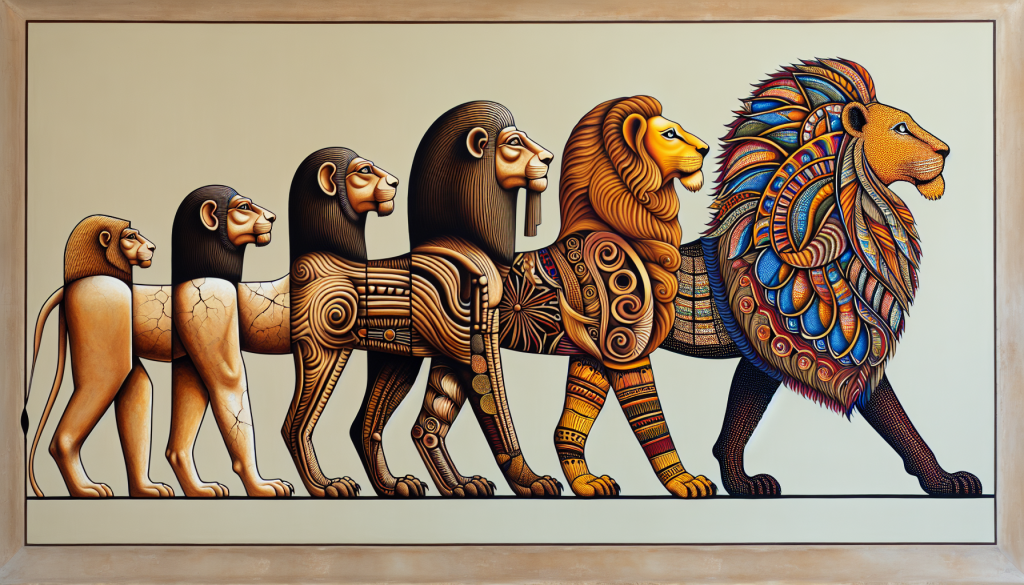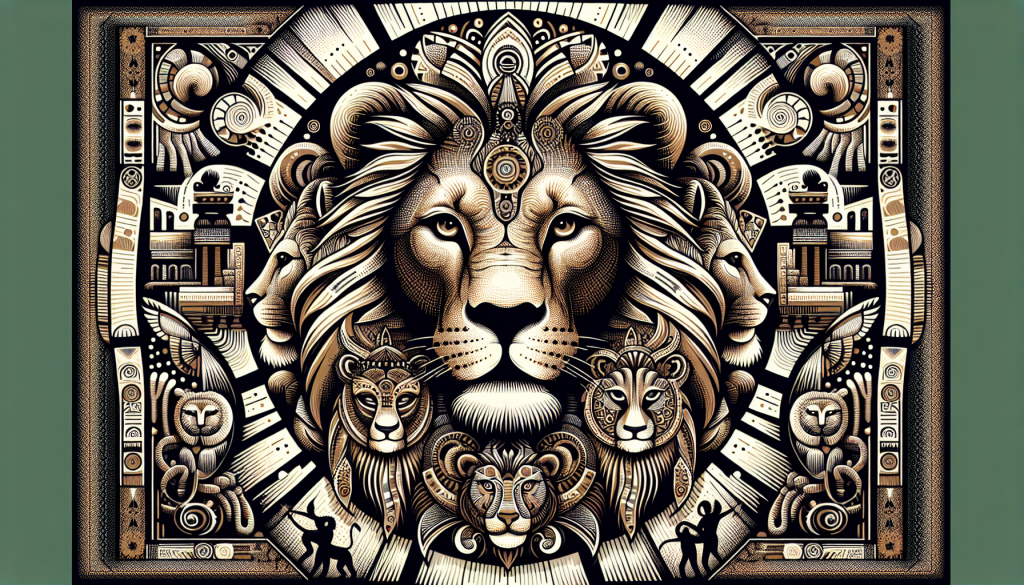Want to dive deep into the world of lion art and symbolism? Look no further! In this article, we will be exploring the rich cultural meanings behind lion imagery with the help of our team of experts. Lions have long held a special place in various cultures around the world, symbolizing courage, strength, and leadership. From ancient civilizations to modern interpretations, we will unravel the fascinating stories and interpretations connected to these magnificent creatures. So, get ready to embark on a captivating journey of discovery as we delve into the captivating world of lion art and symbolism with our knowledgeable guides.
Overview of Lion Symbolism
Lions have been revered and symbolized across various cultures and time periods, embodying power, courage, and strength. Their symbolism dates back to ancient times, with depictions found in cave paintings and artifacts. In different cultures, lions hold diverse meanings, serving as religious and spiritual symbols. Understanding the symbolism behind lion art allows us to delve into the rich tapestry of human history and culture.
Ancient origins of lion symbolism
The origins of lion symbolism can be traced back to ancient civilizations such as Mesopotamia and Egypt. In Mesopotamian mythology, lions were seen as protective deities and considered symbols of the sun and kingship. In Egypt, lions were associated with the goddesses Sekhmet and Bastet, embodying both destructive and nurturing qualities. These early depictions of lions laid the foundation for their symbolism in later cultures.
Lion symbolism in different cultures
The symbolism of lions varies across different cultures. In Greek mythology, lions were associated with the hero Hercules and represented strength and bravery. In Hinduism, the goddess Durga is often depicted riding a lion, symbolizing her power and ferocity. In Chinese culture, lions are seen as guardians and are often depicted in front of important buildings to ward off evil spirits. The diverse interpretations of lions in cultures worldwide highlight their universal significance as symbols of power and protection.
Meaning of lions in religious contexts
Lions hold great significance in religious contexts. In Christianity, lions are associated with the figure of Jesus Christ, often depicted as the Lion of Judah. This representation signifies strength, majesty, and divine authority. In Islam, lions are mentioned in the Qur’an and are considered noble creatures, symbolizing courage and righteousness. In Buddhism, the Buddha is said to have tamed a majestic lion, representing the conquest of the mind’s untamed nature. The religious symbolism of lions reflects their esteemed status and their role as metaphorical guardians.

Depictions of lions in ancient art
Ancient art has provided us with stunning depictions of lions, showcasing their intrinsic connection to human cultures. In Mesopotamian art, lions were featured in sculptures and reliefs, often representing royal power and protection. In Egyptian art, lions were depicted in hieroglyphics, tomb paintings, and temple decorations, embodying both physical and spiritual strength. These artistic representations served as a visual language to convey the significance of lions in ancient societies.
Lions as symbols of power and authority
Throughout history, lions have symbolized power and authority. Their majestic appearance, strong physique, and fearsome roar have made them potent symbols of leadership. In ancient Rome, lions were associated with emperors and depicted on coins and statues to signify their dominance. The British monarchy also adopted the lion as a symbol, representing their power and strength. Lions continue to be associated with leadership and authority in various contexts to this day.
Lions as protectors and guardians
Lions have long been revered as protectors and guardians. In ancient civilizations, statues of lions were placed at the entrances of important buildings and tombs, serving as guardians against evil spirits. This symbolism persisted in medieval and Renaissance art, where lions were often depicted as vigilant protectors of sacred spaces. Lions as protectors convey a sense of security and safety, their powerful presence warding off any potential threats.
Realistic portrayals of lions
In lion art, realistic portrayals aim to capture the physical appearance and characteristics of lions. Artists focus on accurately depicting the lion’s muscular body structure, distinctive mane, and intense eyes. By capturing the essence of lions in their artwork, these realistic portrayals evoke a sense of awe and admiration for these majestic creatures. Realistic lion art allows viewers to connect with the animal’s natural beauty and appreciate the intricate details of their physical form.

Abstract interpretations of lions
In contrast to realistic portrayals, abstract interpretations of lions focus on capturing their essence rather than their physical form. Artists employ creative and imaginative techniques, utilizing shapes, colors, and textures to convey the spirit and symbolism of lions. Abstract lion art can evoke various emotions and allow viewers to explore their own interpretations of the artwork. These interpretations often delve into the deeper meaning behind lion symbolism, transcending the limitations of traditional representation.
Lion art in different mediums
Lion art has been expressed through various mediums, including painting, sculpture, and even digital art. Paintings of lions have been created using a range of techniques, such as oil, watercolor, and acrylic, each offering a different aesthetic and visual impact. Lion sculptures can be carved from stone, wood, or metal, displaying the strength and texture of the lion’s form. With the advent of digital art, artists have explored new possibilities in portraying lions, pushing the boundaries of creativity and expression.
Lions in heraldry traditions
Lions have been prominent figures in the world of heraldry, representing power, nobility, and courage. They appear on countless coats of arms, symbolizing the lineage and strength of noble families. The use of lions in heraldry traces back to medieval Europe, where they became synonymous with chivalry and the warrior ethos. Lions in heraldry often feature specific poses, positions, and elements that convey different meanings and attributes.
Different positions and poses of lions
Lions in heraldry can be depicted in various positions and poses, each carrying its own significance. A rampant lion, with its front paws raised, represents courage and aggression. A passant lion, standing with one paw lifted, symbolizes watchfulness and alertness. A couchant lion, lying down with its head raised, signifies calm power and dominance. These different positions and poses of lions serve as visual symbols, allowing the viewer to interpret the intended message and meaning.

Meaning behind colors and other elements
In heraldry, colors and other elements play a crucial role in conveying meaning and symbolism. The color gold, for example, represents generosity and strength, while red evokes courage and military prowess. Elements such as crowns, shields, and floral motifs can accompany lion symbols, further enhancing their significance. Each color and element contributes to the overall narrative and message of the coat of arms, deepening the symbolism associated with lions.
Lions in Egyptian mythology and religion
Ancient Egypt held a special reverence for lions, incorporating them into their mythology and religious rituals. The lion-headed goddesses, Sekhmet and Bastet, were worshipped and venerated for their protective and nurturing qualities. Sekhmet was associated with destruction and healing, embodying the duality of life and death. Bastet, on the other hand, represented domestication and fertility. The lion symbolism in Egyptian mythology emphasized the delicate balance between chaos and order.
Depictions of lions in Egyptian art
The art of ancient Egypt is adorned with captivating depictions of lions, showcasing the significance of these regal creatures in their culture. Whether carved on temple walls or sculpted in statues, lions were portrayed as powerful and sacred beings. Pharaohs often associated themselves with lions, showcasing their connection to the divine and their role as protectors of Egypt. These art forms reveal the skill and craftsmanship of ancient Egyptian artists and reflect the profound symbolism attributed to lions.
Symbolic significance of lion art in ancient Egypt
The lion art in ancient Egypt held profound symbolic significance, representing power, protection, and spiritual connection. It served as a visual representation of the pharaoh’s authority, as well as a means to honor the gods and goddesses associated with lions. This lion symbolism extended beyond the physical realm, signifying the connection between the human and divine worlds. The presence of lion art in ancient Egypt served to reinforce cultural beliefs and perpetuate the reverence for lions.

Lions in European folklore and mythology
In European folklore and mythology, lions played a significant role, often symbolizing strength, courage, and royalty. The medieval bestiaries, books filled with creature mythology, depicted lions as the “king of beasts,” representing nobility and magnificence. The story of the heroic knight slaying a dragon was paralleled with lions, emphasizing their bravery and chivalrous qualities. European cultures embraced the symbolism of lions, intertwining them with tales of valor and honor.
Lions in Asian cultures and beliefs
In Asian cultures, lions have been imbued with various symbolic meanings. In Chinese culture, the lion is often associated with the mythical creature Nian, which represented luck and protection. Lion dances during celebrations, accompanied by the sound of drums and cymbals, drive away evil spirits and bring good fortune. In Buddhism, lions symbolize wisdom and spiritual power. The combination of the lion’s physical strength and spiritual qualities presents a multifaceted symbolism in Asian cultures.
Comparisons and contrasts of lion symbolism
Comparing and contrasting lion symbolism across different cultures reveals fascinating similarities and differences. While the lion is widely regarded as a symbol of strength and authority across cultures, the specific connotations may vary. For example, Western cultures often associate lions with royalty and leadership, while in Asian cultures, lions are seen as guardians and bringers of luck. These variations highlight the diverse perspectives and interpretations that add depth and richness to lion symbolism.
Lion symbolism in African tribal art
In African tribal art, lions hold great symbolic significance, representing bravery, leadership, and spiritual power. Lion motifs and patterns can be found on masks, sculptures, and textiles, portraying the revered qualities of these majestic animals. African tribal communities use lion art to depict ancestral connections and convey cultural histories. The integration of lion symbolism in African tribal art showcases the importance of lions in the indigenous belief systems and their role in shaping identity and community.

Meaning of lion motifs and patterns
The motifs and patterns used in lion art within African tribal cultures often symbolize specific meanings. For instance, the lion’s mane signifies wisdom, while its sharp teeth represent protection and ferocity. Vibrant colors and intricate designs convey emotions, stories, and cultural heritage. The repetition of certain symbols or patterns may reaffirm community values and serve as visual reminders of ancestral wisdom. Lion motifs in African tribal art carry layers of significance that reflect the communal beliefs and traditions.
Lions as representations of bravery and leadership
Lions hold a prominent place in African folklore, often representing bravery and leadership. The lion’s courage and fearlessness make it an ideal symbol for tribal leaders and warriors. African tales are replete with stories of lion-like characters, showcasing their strength and bravery. The lion’s regal presence and ability to protect its pride translate into the qualities desired in leaders within African cultures. The representation of lions as leaders highlights their vital role in African societies.
Lions in contemporary art movements
Lion art continues to evolve and find new expressions within contemporary art movements. Artists incorporate lion symbolism into various styles, such as realism, impressionism, and abstract art. Through contemporary lion art, artists explore broader themes, including environmental conservation, social justice, and human-animal relationships. Contemporary lion art serves as a reflection of our modern world and addresses ongoing issues while keeping the symbolism and essence of lions alive.
Symbolism of lions in popular culture
Lions have become enduring symbols in popular culture, appearing in literature, films, and other forms of media. In literary works, lions often represent bravery, resilience, and strength, serving as metaphors for heroic characters. In movies and television, lions are often personified and depicted as majestic and powerful beings. The lion’s symbolism in popular culture allows individuals to connect with their innate traits and find inspiration in these iconic animals.
Evolution of lion art over time
Over time, lion art has evolved alongside human culture, reflecting the changing perspectives and artistic trends. From the cave paintings of early civilizations to the digital art of the present day, each era has interpreted lion symbolism in its unique way. Technological advancements have expanded the possibilities for artistic expression, enabling artists to experiment with different mediums and techniques. The evolution of lion art stands as a testament to the enduring fascination with these magnificent creatures.
Psychological interpretations of lion art
Psychological interpretations of lion art delve into the subconscious mind and explore the personal meanings individuals attribute to lion symbols. Lions may represent the Jungian archetype of the hero, symbolizing one’s inner strength and potential. This interpretation highlights the human desire for courage and empowerment. Additionally, the lion’s subliminal presence in dreams and fantasies can reveal hidden emotions and desires, acting as a powerful symbol of self-discovery and transformation.
Sociopolitical contexts of lion symbolism
Within various sociopolitical contexts, lion symbolism can take on deeper meanings. In some instances, lions have been used to represent national identity and pride. They have been adopted as symbols by sports teams and political organizations, representing strength, unity, and loyalty. In the context of conservation efforts, lions symbolize the importance of preserving wildlife and protecting natural habitats. Thus, lion symbolism extends beyond the realm of art and culture to influence and shape societal values.
Appreciating the beauty and depth of lion art
Lion art invites viewers to appreciate the beauty and depth of these magnificent creatures’ symbolism. Whether through the skilled brushstrokes of a painting or the intricate carvings of a sculpture, lion art captures the essence and majesty of lions. By exploring the cultural meanings attached to lion art, we gain a deeper understanding of human history, spirituality, and the universal human fascination with these awe-inspiring creatures.
Methods of collecting lion art
Collecting lion art allows enthusiasts to preserve and showcase the rich cultural heritage associated with lion symbolism. Art collectors can acquire lion-themed paintings, sculptures, and artifacts from various periods and styles. Auctions, galleries, and online platforms provide opportunities to acquire lion art, with options ranging from original works to reproductions. Collectors often focus on specific artists or periods, allowing them to curate a collection that reflects their personal appreciation for lion symbolism.
Challenges in preserving lion art
Preserving lion art presents numerous challenges due to the fragility and age of certain pieces. Paintings may suffer from fading or deterioration, requiring proper storage and conservation techniques. Sculptures and artifacts made from delicate materials can be susceptible to damage and decay over time. Museums, galleries, and collectors must employ specialized methods and expertise to ensure the longevity and preservation of lion art, safeguarding its cultural and historical value.
Promoting the cultural significance of lion art
Promoting the cultural significance of lion art involves educating and engaging individuals about its history and symbolism. Exhibitions, lectures, and workshops can provide insights into the cultural contexts and meanings behind lion art. Collaboration with artists, scholars, and experts in the field can help facilitate a deeper understanding and appreciation for lion symbolism. By showcasing the beauty and cultural richness of lion art, we can ensure its enduring legacy and inspire future generations to explore its profound significance.

